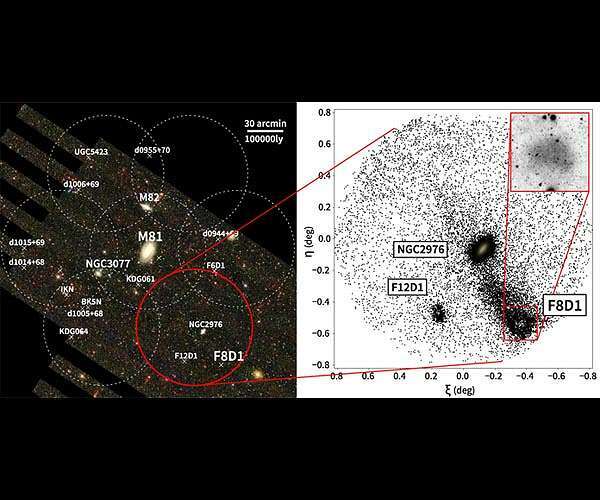31.01.2023

(Left) M81 Group survey footprint (white and red circles) overlaid on a Sloan Digital Sky Survey image. (Right) The spatial distribution of red giant branch stars at the same distance as F8D1 in the field delineated by the red circle in the left panel. The upper right image is a zoom in on the main body of the F8D1 galaxy.
A giant diffuse tail of stars has been discovered emanating from a large, faint dwarf galaxy. The presence of a tail indicates that the galaxy has experienced recent interaction with another galaxy. This is an important clue for understanding how so called "ultra-diffuse" galaxies are formed.
Astronomers using the Subaru Telescope and the Canada-France-Hawaii Telescope found a tail of stars stretching 200,000 light-years out away from a galaxy known as F8D1. This galaxy is a member of the M81 group located 12 million light-years away on the boundary between the constellations Ursa Major and Camelopardalis.
F8D1 is one of the closest examples of an "ultra-diffuse" galaxy. The origin of these enigmatic galaxies has puzzled astronomers for several decades: are they born this diffuse or does some later event cause them to puff up in size?
The discovery of a huge tidal tail from F8D1 is compelling evidence that the galaxy has been strongly shaped by events in the past billion years. This is the first time that such a stellar stream has been discovered in a UDG. The team suggests F8D1 was disrupted by a recent close passage to the massive spiral M81, the dominant member of the group containing F8D1.
Since F8D1 lies at the edge of the survey area, only one tidal arm can be seen, extending to the northeast. The team will now search to see if there is a counterpart stream to the southwest.
Quelle: SD

